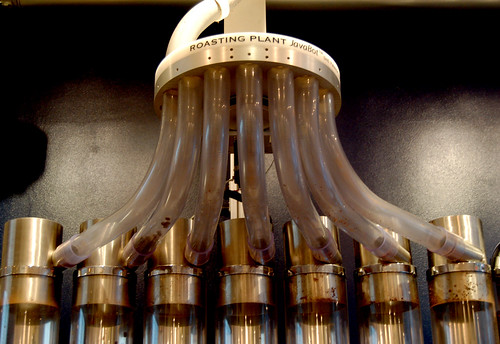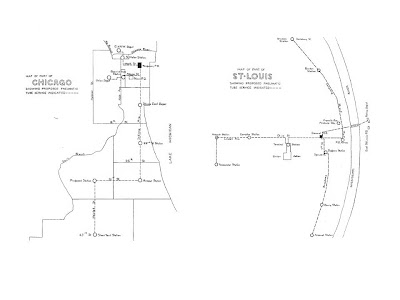Coffee and chocolate go so well together that I thought this fantastic pneumatic tube system rigged up at The Roasting Plant in New York City would be the perfect image for Easter.
According to a New York Magazine article on the store, the tubes, where "beans dance overheard" are meant to "minimize the time and distance between roasting, grinding, brewing, and drinking". When it comes to coffee, time certainly matters! This is the kind of technology which I can see would also find a perfect place in my old hometown Melbourne, where everything to do wtih coffee is now well and truly science.
Happy Easter!
Pneumatic tubes bring just roasted coffee beans into their respective tubes., originally uploaded by Curious Expeditions. See here for more pictures of The Roasting Plant: http://www.roastingplant.com/tour/









